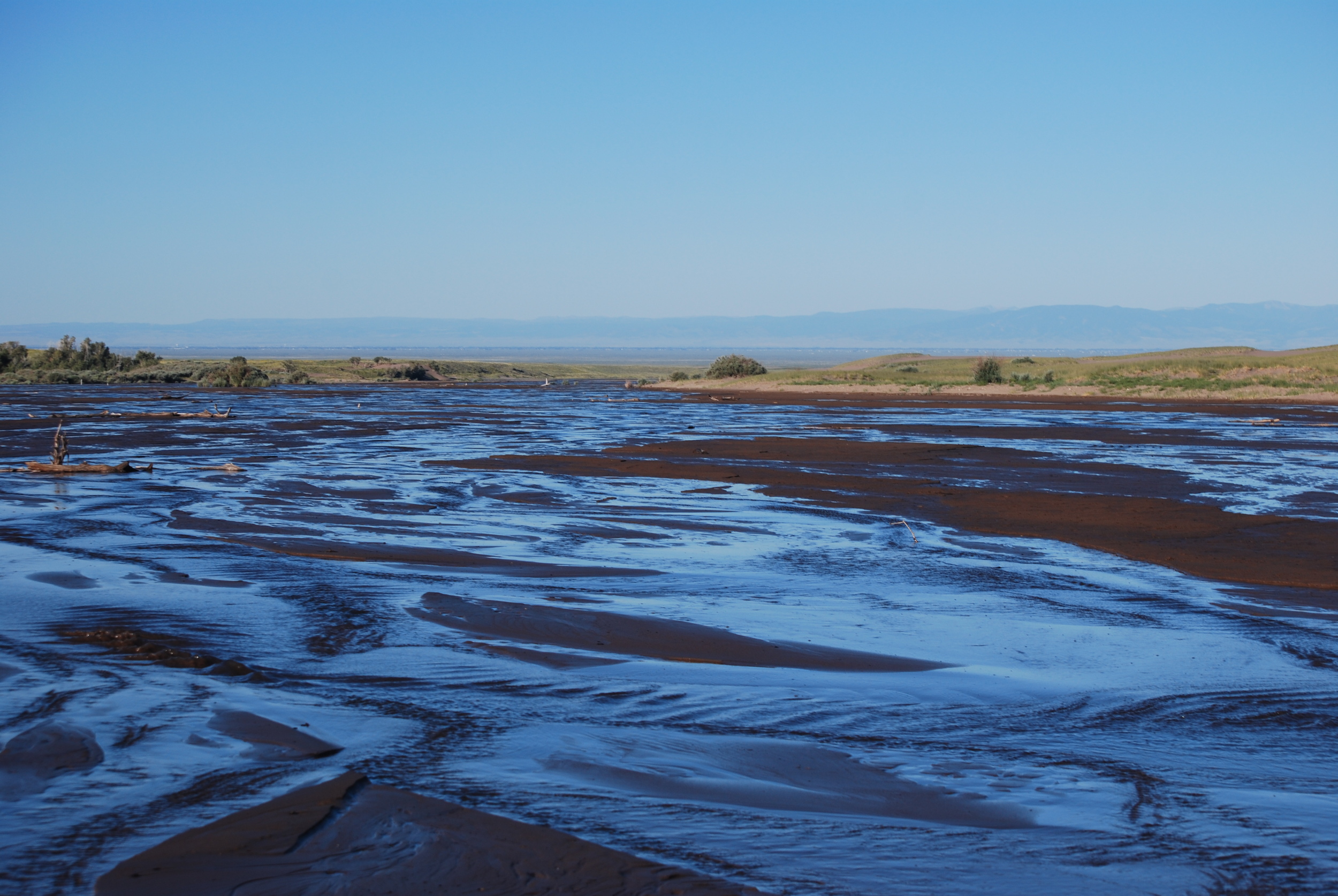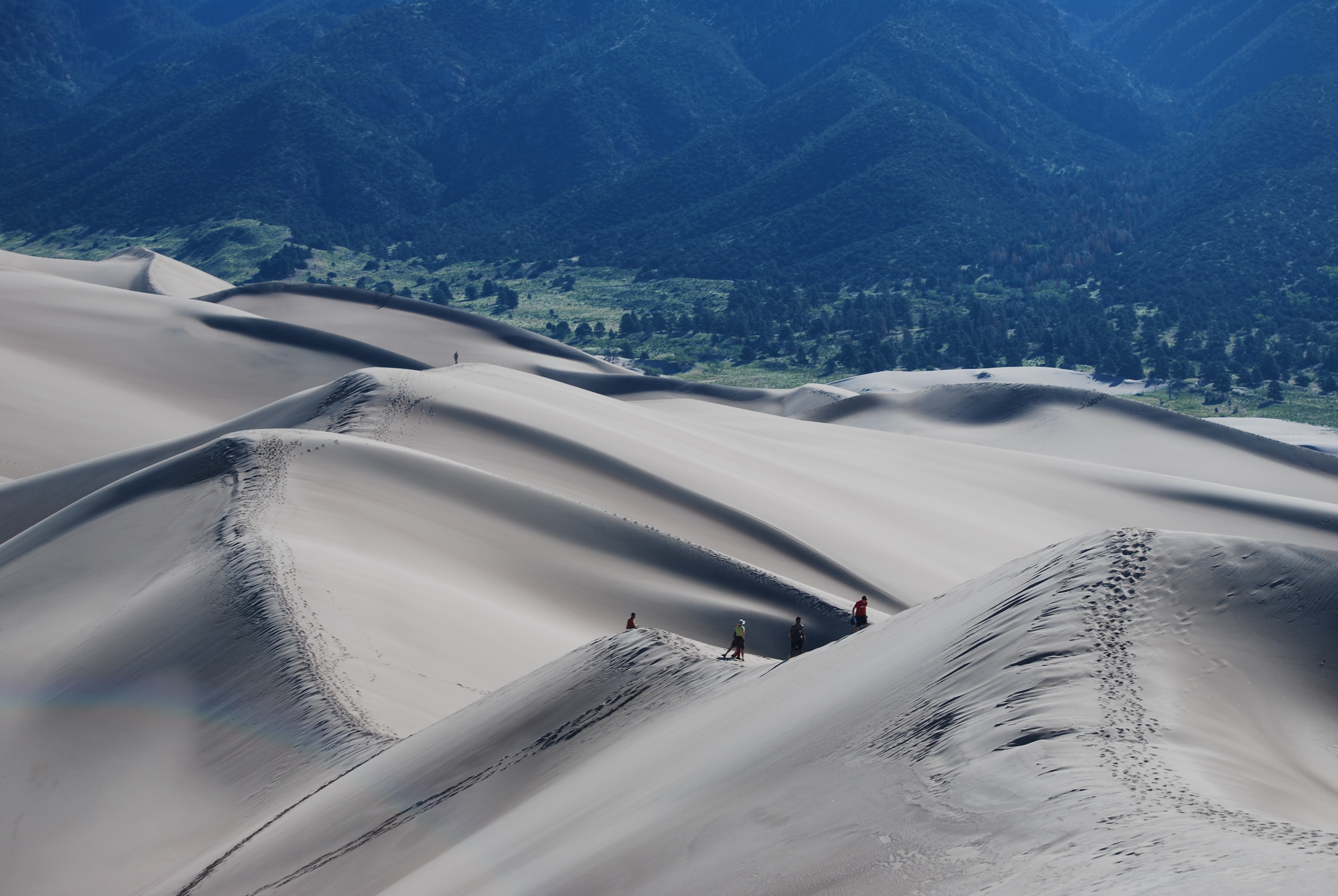Image via Wikimedia Commons
Since the Landscape Architecture Registration Exam (LARE) test transitioned from five parts with drawings and computer components, to four parts that are all computer based, much confusion has swirled around the blogs, message boards and the collective minds of the bewildered test takers. Studying for and passing the LARE is a series of odious tasks from beginning to end. One task that I found to be particular to the LARE and very unnecessary is figuring out what is actually on the test and how to best use your precious study time. The LARE was not my first rodeo. I also studied for and passed the CPA exam in less than a year. But that was a different life and I digress.
Given my experience and success with the LARE, I feel it is only right that I pass on what I have learned for posterity. However, I would like to disclaim something: this advice is only worth what you are paying for it (which is nothing). If you disagree with anything I say here, please constructively let us know in the comments.
I will start with telling you how I did it, a couple ways I think it could be done, and then section by section what I found useful for study. It is against the code of conduct for me to tell what was actually in the test, so I can’t be that specific. It also changes every session, so it wouldn't even be helpful.
HOW I DID IT
I began last year in the April administration with section 1. I figured I would get my feet wet with the “easy” one. Section 1 is by no means easy, but it is straightforward. There are several resources out there (which I will get to) that if you study from them you should ace it. If only it were so for the rest.
Over the summer I decided to speed up the slow boat to China and do Sections 2 and 3 together. After a period of intense procrastination and a trip to Europe, I decided I did not have enough time left to study two sections. I had already scheduled 3, so I just didn't sign up for 2. This was probably a mistake, since 2 months is more than enough time to study for one section if you do it diligently.
After getting the boost to my confidence when I passed 3, I decided that I would knock out 2 and 4 together in the December administration. There is a lot of overlap between some sections, but 2 and 4 were a bad choice to put together. It can be done, but there are better ways. At this time, I foolishly scheduled the two tests right after the thanksgiving holiday weekend, when my whole family was coming to town and staying at my house. That was so stupid! But still I passed, and you can too!
POSSIBLE STRATEGIES THAT WOULD BE SMARTER THAN THE WAY I DID IT
With the benefit of hindsight I see a few other ways this could be done.
The drawn out method: take one section at each administration and really focus on it. This will take more than a year, but if you are paying for the test yourself, and you are a low-risk sort of person, you can be sure you gave it your best shot at passing. The drawback of this is method is that it takes more than a year, and who wants to waste any more time than necessary?
The compressed method: Take 2&3 together first, then take 1&4 together or vice versa. This way, it takes you only 6 months, and you can make maximum use of the overlap in the study material. Folks used to have to take all 20 sections at once, so you can do two. (The number of sections goes up and up the older the LA is…”what, you only take 4 sections on the computer? In my day we had to draw construction documents in an unlit room for 8 days straight with no food or toilets! In pen! With no calculator!” ugh, shut up.)
The one year low risk method: Double up on one administration. Maybe April do 1&2, August do 3, and December do 4. Or maybe do it the way I intended to (see above), but don’t chicken out in July. This is a very viable strategy and only ruins one year of your life.
You'll need to get some books. Maybe not these.
WHAT TO STUDY
And now the main course. There is some seriously unnecessary confusion surrounding what to study. CLARB has put out a reading list, practice exams and of course, the Orientation Guide. The ASLA as also released some sample questions and additional material for Sections 3 and 4. These documents are your best resources for the test, although if you are just starting out they may seem like they are incomplete. The list of topics by section can be found in the orientation guide, but you may find, like I did, that it is worthless for helping you decide where to spend your time.
A word on the practice tests: For each section, start with the CLARB practice test to get a feel of what you might see, then put it away. Optional: Towards the middle of your study time, get the Shake n Bake tests, and test yourself. Write down any terms from it you don’t understand then, don’t look at it anymore. When you are about 1 week away from test day, take the CLARB practice test again. Do not be discouraged if you do poorly on a practice test. I did terrible on them all but I still passed, and contrariwise, many people report doing great on the practice test but still failing. Just use them to familiarize yourself with the way CLARB writes questions.
A word on old study material sitting on your office hard drive: just put it down, and back away. Maybe even do future candidates at your office a favor by putting it all into a folder called “OLD STUFF FROM WHEN YOU HAD TO DRAW FOR 8 DAYS WITHOUT LIGHT FOOD OR PLUMBING”. Maybe there are some nuggets of truth in there, sure, but is it worth it to dig through some guy’s seminar notes from 2006? Don’t waste your time. There's plenty of other stuff you can wile away the hours with. If you do read that cobwebby old stuff, remember that there is no reference manual on the test now, and everything you need to answer a question will be given to you.
Section 1: As I already mentioned, this section is the most straightforward. Some people who are extremely left-brained designers may have told you that this section is SO HARD! It’s not. Get yourself a copy of Construction Contracts by Hinze and read it. (I used an edition that had many references to fax machines and it worked out just fine, no need to buy the most recent edition if you can borrow an old one). There are a few chapters and case studies that you can skip, but read as much as you can. Take notes to ensure you are actively engaged in what you are reading, and come back to those notes occasionally to refresh your memory. Read up on specifications! They will be back in section 4 as well, so get them down pat. Also, there will be a section of the LARE Orientation Guide that regarding ethics and rules for landscape architects. This is on the test, so get very familiar. I have been told that the other books on the reading list were not valuable, but if you already own them, or can get them from the library, they are probably worth a skim.
Section 2: Read Site Planning and Design Handbook by Russ and Site Planning by Lynch (not on the CLARB list). You probably do not need to read both of them cover to cover. Depending on your job and school experience, some things may be unnecessary. I felt like both books were like reading a ton of common sense that I already learned in school, but there was definitely value. They both took disparate ideas floating around in my brain, and reorganized them back into a more logical framework, so I could more easily recall a concept when asked a random question. The Basic Elements of Landscape Architectural Design by Booth was very common sense, and I didn't think it had much value. However, it is heavy illustrated and concepts from this book may be worth a skim when studying for 3.
Section 3: Go back and review the 3 books you used for section 2, or look through the parts you didn't get to. The ASLA website has some useful links to old vignettes. I will break my caveat here, and say that these could actually be good practice for section 3, since you have to drag and drop items on a plan. The best part is, when you look at the answer key and your drawing is nothing like it, it doesn't matter because that isn't how they test us anymore! Woohoo! Can I get up and use the bathroom, too? You bet you can!
Investing in a copy of Graphic Standards for Landscape Architects is a good idea. Part 2 of the book has some concepts relevant to Section 3, and Parts 3 and 4 of the book is relevant to section 4. Part 1 is relevant to section 1, but I didn't find it to be very useful for study. If cost is an issue, the student edition is much cheaper to buy. I already owned the student edition from school and it worked for me.
Section 4: This one is a beast. They throw in a little bit of everything in this one. Grading, Drainage and Construction Documents is as all-encompassing as it sounds. Get your section 1 notes back out and give them a once over. Don’t forget your bonds, the bid process or specs, since that is an important part of construction documents. If you don’t deal with CD's much at the office, try to find a project manual and go through it, just to get familiar with layout and conventions. Construction detailing is covered in this section too. CLARB gives lists in the orientation guide for studying section 4, like fasteners and deck joist spanning. They are there for a reason. I read the Site Engineering book cover to cover, and I actually found that I was wishing I had spent more time reading about bolts and less about the finer points of grading and drainage.
Grading and Drainage from Site Engineering for Landscape Architects goes above and beyond what you will need for the test. There were 13 or so chapters (not including case studies, which you can skip) in the musty old edition that I used and you can easily do one chapter in a sitting and get through the whole book in couple of weeks. If you have mastered these concepts, then great, you won’t get too many grading surprises on the test. However, if you are short on time, you can skip learning Manning’s equation by heart, and just get moderately acquainted with pipe sizing. Road alignment and stationing is something you should be able to do or read on a plan. The type of complex grading problems you find in real life isn't the sort of thing that will be on the test. You just need to know the important concepts that you already learned in grading class. The ASLA vignettes might be good practice if it has been years since you did any type of grading. Again, do not get distraught if your answer doesn't look just like the answer key; those days are over.
That was the good news. Now for the bad news: if you are not experienced with construction detailing, you will have to read the chapters devoted to it in Graphic Standards. I am not kidding, and yes, it is as boring as it sounds. If you can find a way to make it fun or relevant, please post in the comments, because I never figured it out. When reading these sections, what you need to cement into your memory is terms and concepts, not anything very specific like how deep a footer for a wall should be based on x wind load. Any sort of formula is probably a waste of brain space. But the concept of wind load and how it may affect wall construction is important, and everything like that is fair game. Getting familiar with the parts of ADA that landscape architects often use (handrails, walkways, stairs, ramps and clear space) is imperative. You won’t be able to memorize it all, so accept it, and use common sense and the process of elimination if you come across something you don’t know.
GENERAL STUDY ADVICE
If you are still dreading this test because you are what is known as a “bad test taker”, take heart. What your problem could be is that you never really learned how to learn. Before you dive in head first to the frustrating LARE process, perhaps read up on some strategies for making learning easier.
I found this course to be really helpful in training my brain. https://www.coursera.org/course/learning
There are the obvious things, like if you learn a little bit each day, you will retain more than if you cram. But did you know that getting a good night’s sleep clears your brain of toxins that form over the course of the day and you will wake up feeling refreshed, with the added benefit of possibly dreaming about what you are learning? Check it out, and watch some of the videos, it’s free!
Also, start a spreadsheet. Hold yourself accountable (to yourself) by creating study goals and tracking how you do. Log how much time you spent and what you were doing. This will be very helpful if –heaven forbid- you do fail a section. When you meet your goals, and especially when you pass a section, treat y’self. Have an ice cream on Friday if you finished your reading goals for the week. Have a beer (or seven) when you are done with the test. You earned it.
As you are sitting in that sad, gray Pearson Vue testing room in a suburban office park, the whir of the highway outside and tapping of keys the only sound, the tan walls of the cubicle obscuring any connection with other life in the room, and the pressure of months of preparation all leading up to this computer screen in front of you, I wish you the best, future Registered Landscape Architect. Know that you can do it, and that I am rooting for you.












